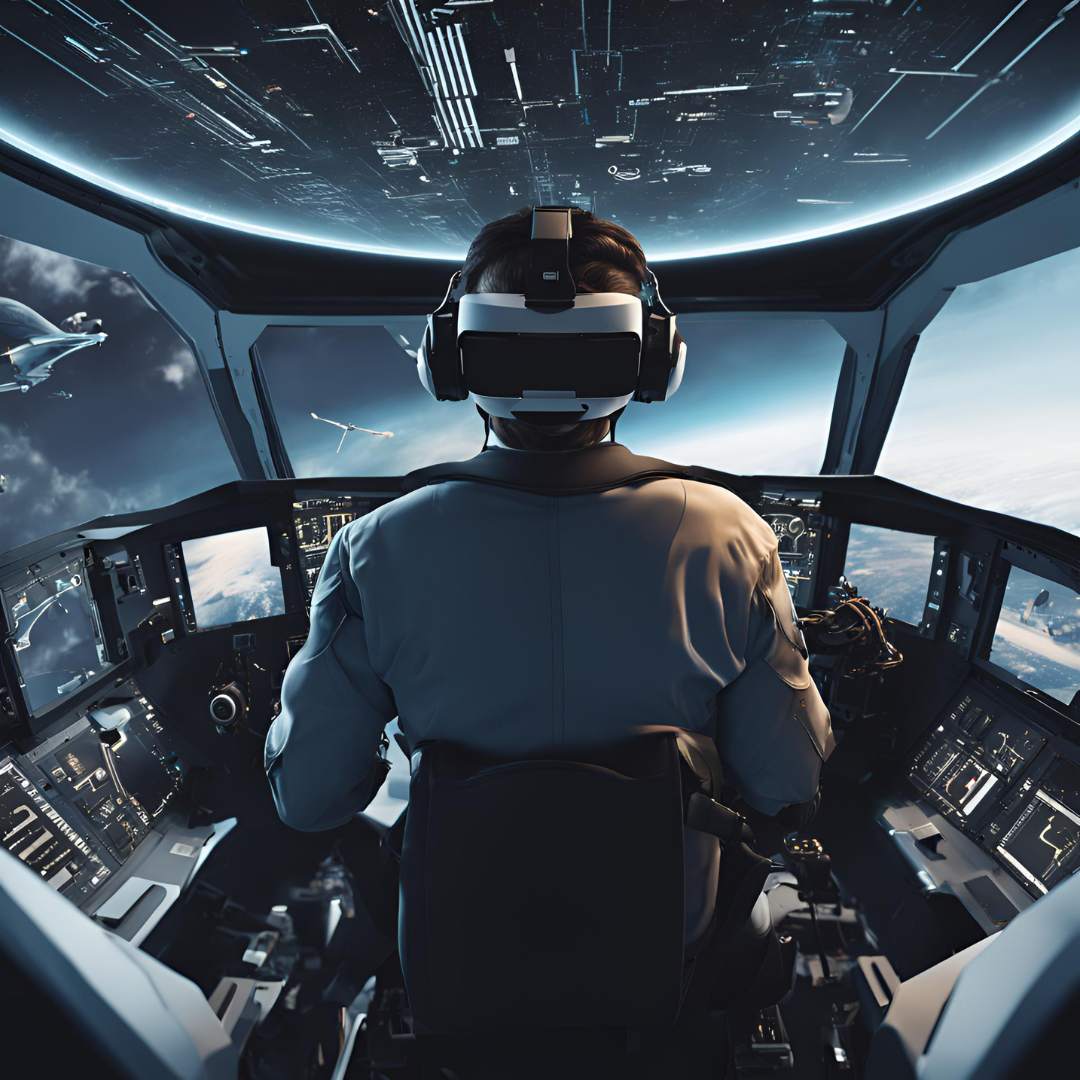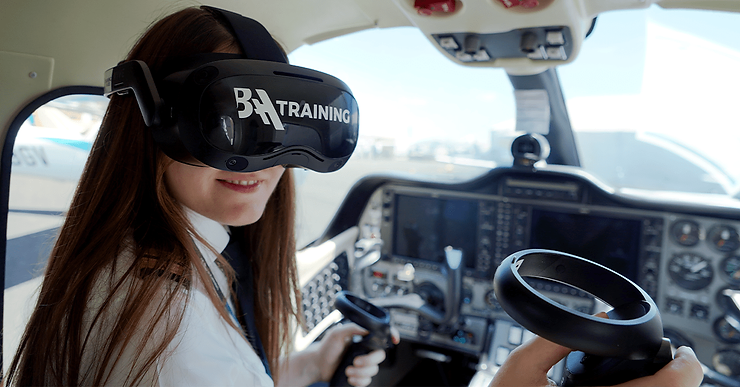
Flying Safer: Improving Pilot Training and Simulation Technologies
Ever wondered how pilots stay sharp and prepared for anything the skies might throw at them? Get ready to dive into a fascinating journey into the world of cutting-edge pilot training and simulation technologies.
Why Pilot Training Matters: It's Not Just About Joystick Skills
Becoming a pilot isn't just about mastering takeoffs and landings. It's about handling unexpected situations, making split-second decisions under pressure, and ensuring the safety of everyone onboard. And that takes more than just learning the ropes in a real aircraft.
That's where pilot training and simulation technologies come in. They allow pilots to practice their skills in a safe, controlled environment, without risking lives or expensive aircraft. And with the latest advancements, these simulations are becoming more realistic and effective than ever before.

The Flight Simulator Revolution: Beyond Just a Video Game
Flight simulators have come a long way since their humble beginnings as simple training tools. Today's simulators are so realistic that pilots can experience almost everything they would in a real cockpit, from the feel of the controls to the stunning views out the window.
- Visual Realism: Modern simulators use advanced graphics and projection systems to create incredibly lifelike environments. Pilots can practice takeoffs and landings at different airports around the world, in all sorts of weather conditions, without ever leaving the ground.
- Motion Cueing: Ever felt that stomach-churning sensation during turbulence? Simulators use motion platforms to replicate the physical sensations of flight, helping pilots get accustomed to the real deal.
- Sound Simulation: From engine roars to air traffic control chatter, simulators recreate the entire auditory experience of flying, further enhancing realism.
- Haptic Feedback: Some simulators even use haptic feedback devices that vibrate the controls, providing pilots with tactile cues that mimic the real thing.
Scenario-Based Learning: Training for the Unexpected
One of the most exciting developments in pilot training is the increasing use of scenario-based learning. This approach involves putting pilots through a series of realistic scenarios, such as engine failures, severe weather, or emergency landings.
According to a study by the International Civil Aviation Organization (ICAO), scenario-based training can improve pilot performance by up to 30%. By practicing how to handle these challenging situations in a safe and controlled environment, pilots are better prepared to react quickly and decisively if they encounter them in real life.

Competency-Based Assessments: Measuring What Matters
Traditional pilot training often relied on rote memorization and standardized tests. But let's face it, being a good pilot isn't just about knowing the facts – it's about applying that knowledge unreal-world situations.
That's where competency-based assessments come in. These assessments focus on evaluating a pilot's ability to perform specific tasks and make sound decisions under pressure. For example, a pilot might be tested on their ability to land an aircraft safely in crosswinds or to manage a medical emergency onboard.
The FAA is a strong advocate for competency-based training and assessment, citing its effectiveness in improving pilot proficiency and reducing errors.
The Human Element: The Key to Safe Skies
While technology plays a crucial role in pilot training, it's important to remember that the human element is still paramount. Simulators and other tools can only do so much – ultimately, it's up to the pilot to make the right decisions and ensure the safety of their passengers.
That's why training programs also focus on developing critical soft skills like communication, teamwork, and decision-making. After all, the best pilots aren't just technically proficient – they're also calm, collected, and able to think clearly under pressure.
Looking to the Future: The Skies Are the Limit
The world of pilot training and simulation technology is constantly evolving. Here are a few exciting trends to watch out for:
- Virtual Reality (VR) and Augmented Reality (AR): These immersive technologies are already being used in some training programs, and their potential is enormous. VR and AR can create even more realistic and engaging training scenarios, allowing pilots to practice in a wider range of environments and situations.
- Artificial Intelligence (AI): AI can be used to personalize training programs, tailoring them to each individual pilot's strengths and weaknesses. It can also be used to provide real-time feedback and coaching, helping pilots improve their skills more quickly.
- Data Analytics: By analyzing data from simulators and real-world flights, we can gain valuable insights into pilot performance and identify areas where training can be improved.

Want to Learn More?
If you're interested in learning more about pilot training programs or exploring career opportunities in aviation:
Ever wondered how pilots stay sharp and prepared for anything the skies might throw at them? Get ready to dive into a fascinating journey into the world of cutting-edge pilot training and simulation technologies.
Why Pilot Training Matters: It's Not Just About Joystick Skills
Becoming a pilot isn't just about mastering takeoffs and landings. It's about handling unexpected situations, making split-second decisions under pressure, and ensuring the safety of everyone onboard. And that takes more than just learning the ropes in a real aircraft.
That's where pilot training and simulation technologies come in. They allow pilots to practice their skills in a safe, controlled environment, without risking lives or expensive aircraft. And with the latest advancements, these simulations are becoming more realistic and effective than ever before.

The Flight Simulator Revolution: Beyond Just a Video Game
Flight simulators have come a long way since their humble beginnings as simple training tools. Today's simulators are so realistic that pilots can experience almost everything they would in a real cockpit, from the feel of the controls to the stunning views out the window.
- Visual Realism: Modern simulators use advanced graphics and projection systems to create incredibly lifelike environments. Pilots can practice takeoffs and landings at different airports around the world, in all sorts of weather conditions, without ever leaving the ground.
- Motion Cueing: Ever felt that stomach-churning sensation during turbulence? Simulators use motion platforms to replicate the physical sensations of flight, helping pilots get accustomed to the real deal.
- Sound Simulation: From engine roars to air traffic control chatter, simulators recreate the entire auditory experience of flying, further enhancing realism.
- Haptic Feedback: Some simulators even use haptic feedback devices that vibrate the controls, providing pilots with tactile cues that mimic the real thing.
Scenario-Based Learning: Training for the Unexpected
One of the most exciting developments in pilot training is the increasing use of scenario-based learning. This approach involves putting pilots through a series of realistic scenarios, such as engine failures, severe weather, or emergency landings.
According to a study by the International Civil Aviation Organization (ICAO), scenario-based training can improve pilot performance by up to 30%. By practicing how to handle these challenging situations in a safe and controlled environment, pilots are better prepared to react quickly and decisively if they encounter them in real life.

Competency-Based Assessments: Measuring What Matters
Traditional pilot training often relied on rote memorization and standardized tests. But let's face it, being a good pilot isn't just about knowing the facts – it's about applying that knowledge unreal-world situations.
That's where competency-based assessments come in. These assessments focus on evaluating a pilot's ability to perform specific tasks and make sound decisions under pressure. For example, a pilot might be tested on their ability to land an aircraft safely in crosswinds or to manage a medical emergency onboard.
The FAA is a strong advocate for competency-based training and assessment, citing its effectiveness in improving pilot proficiency and reducing errors.
The Human Element: The Key to Safe Skies
While technology plays a crucial role in pilot training, it's important to remember that the human element is still paramount. Simulators and other tools can only do so much – ultimately, it's up to the pilot to make the right decisions and ensure the safety of their passengers.
That's why training programs also focus on developing critical soft skills like communication, teamwork, and decision-making. After all, the best pilots aren't just technically proficient – they're also calm, collected, and able to think clearly under pressure.
Looking to the Future: The Skies Are the Limit
The world of pilot training and simulation technology is constantly evolving. Here are a few exciting trends to watch out for:
- Virtual Reality (VR) and Augmented Reality (AR): These immersive technologies are already being used in some training programs, and their potential is enormous. VR and AR can create even more realistic and engaging training scenarios, allowing pilots to practice in a wider range of environments and situations.
- Artificial Intelligence (AI): AI can be used to personalize training programs, tailoring them to each individual pilot's strengths and weaknesses. It can also be used to provide real-time feedback and coaching, helping pilots improve their skills more quickly.
- Data Analytics: By analyzing data from simulators and real-world flights, we can gain valuable insights into pilot performance and identify areas where training can be improved.

Want to Learn More?
If you're interested in learning more about pilot training programs or exploring career opportunities in aviation:
'

